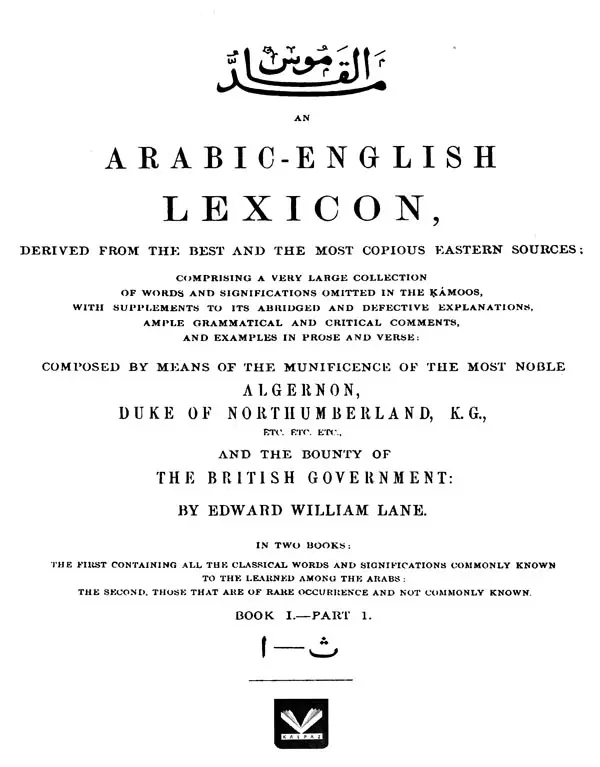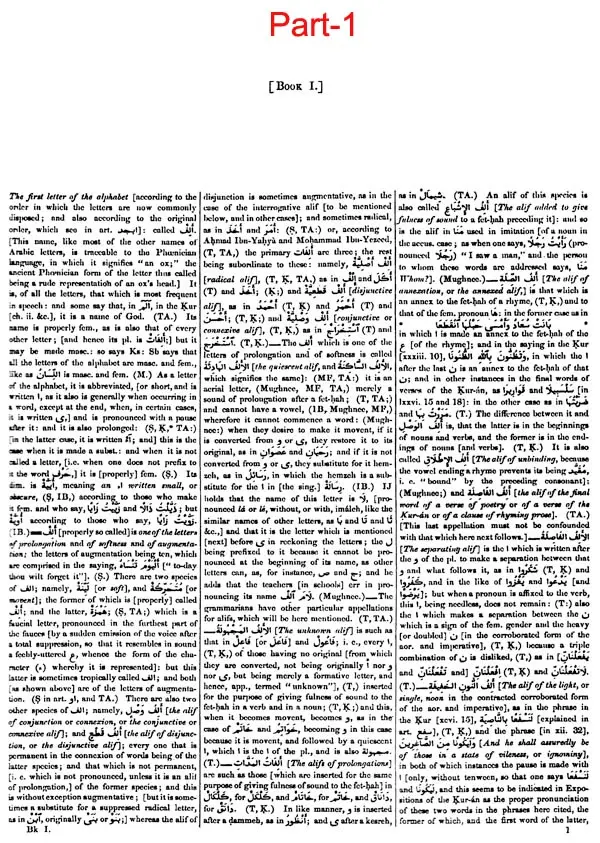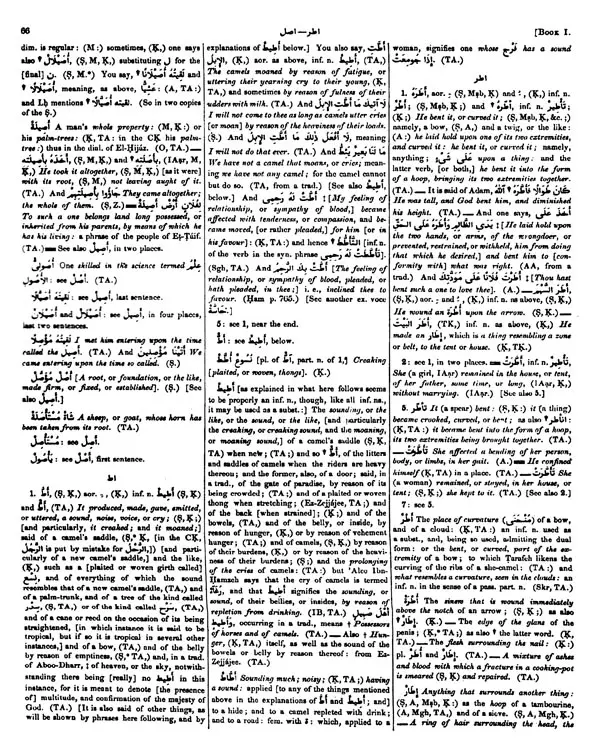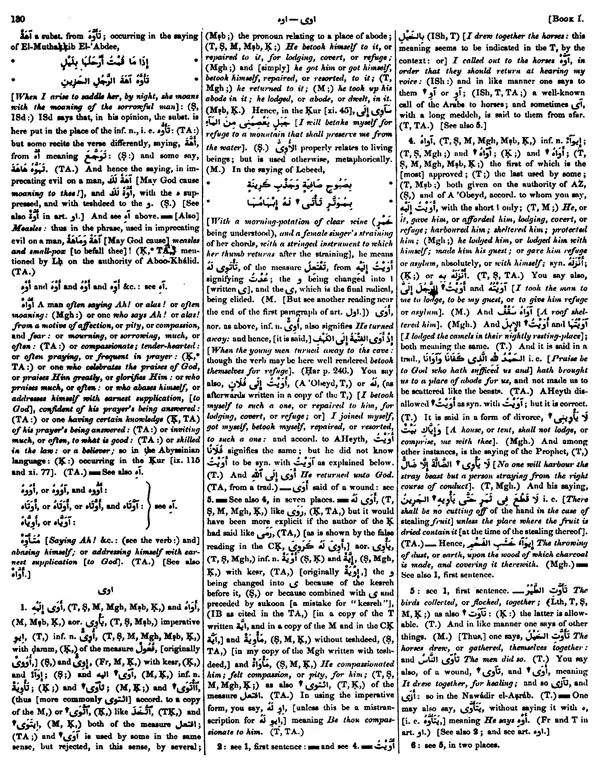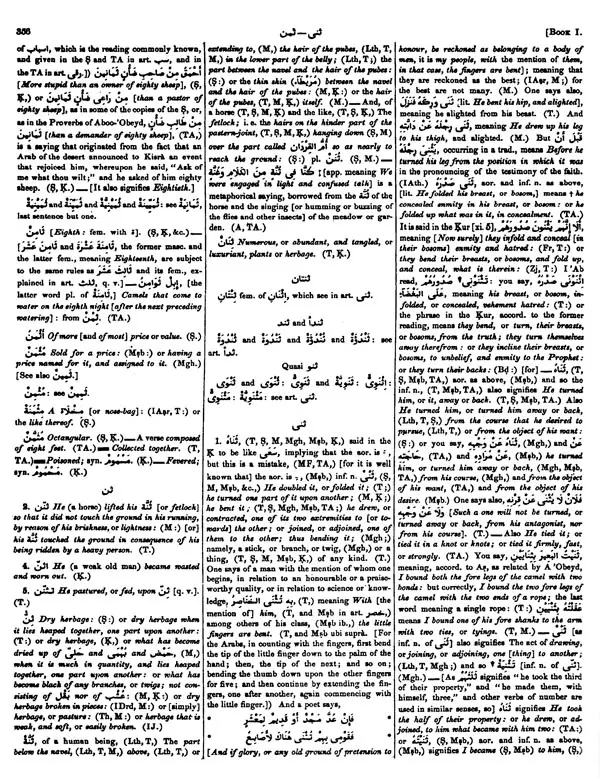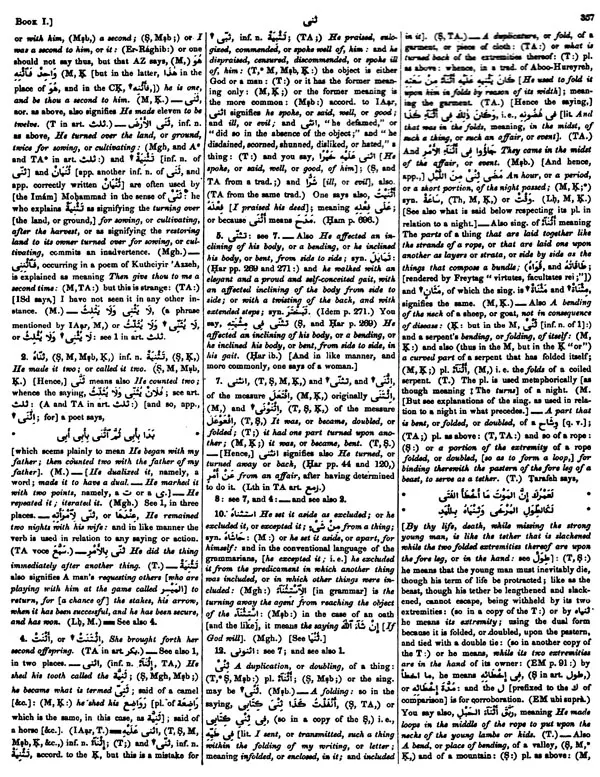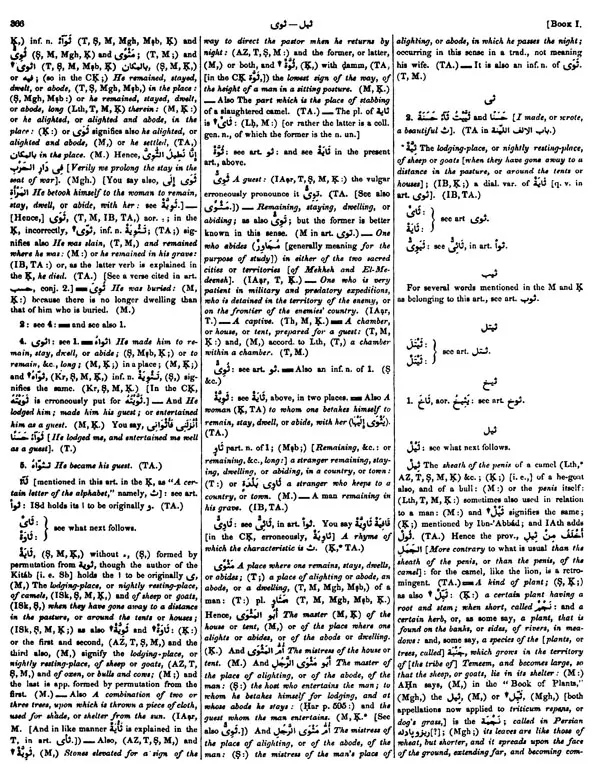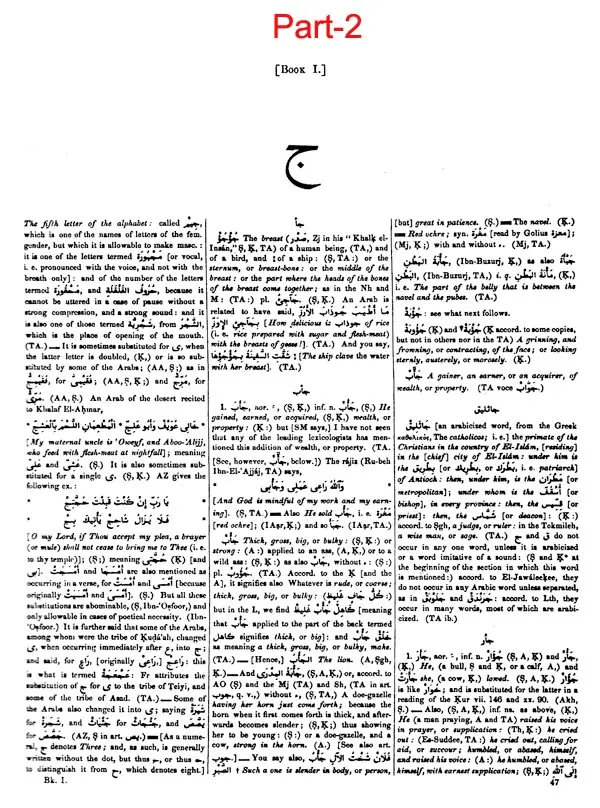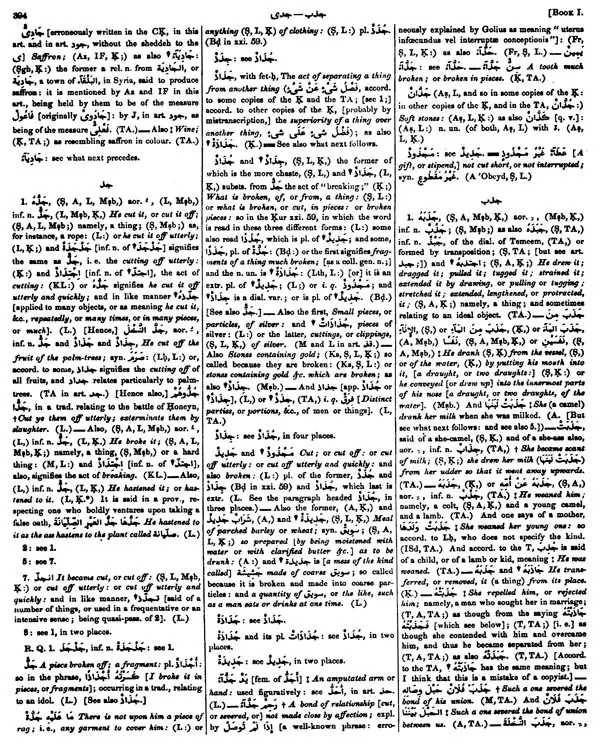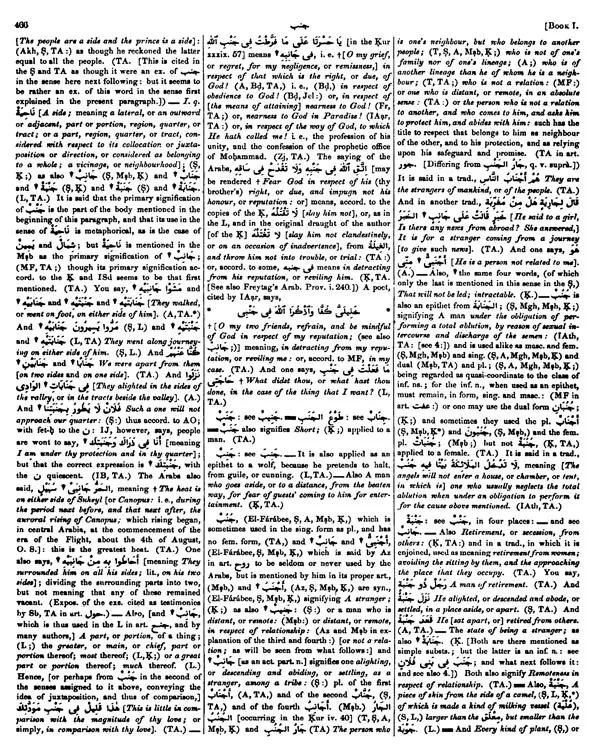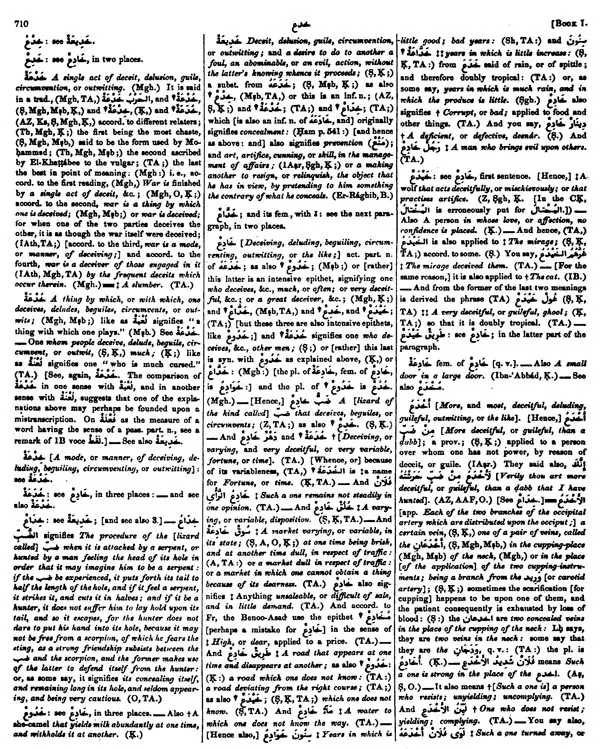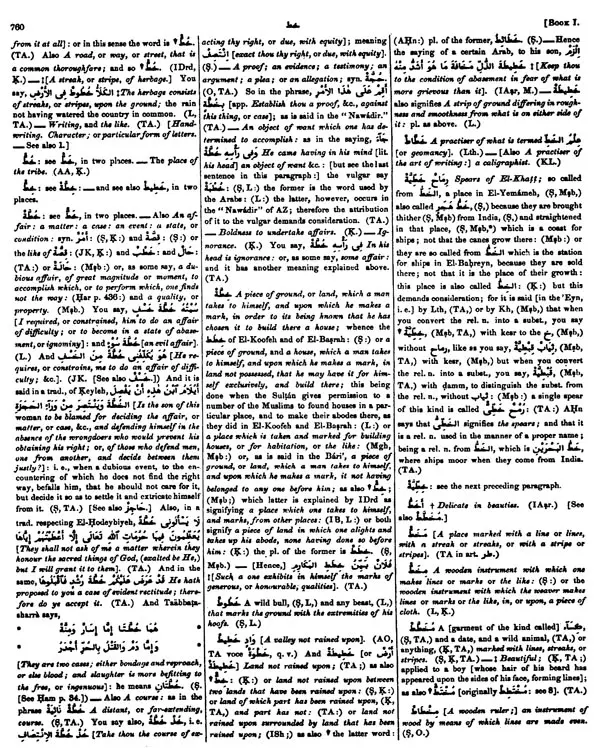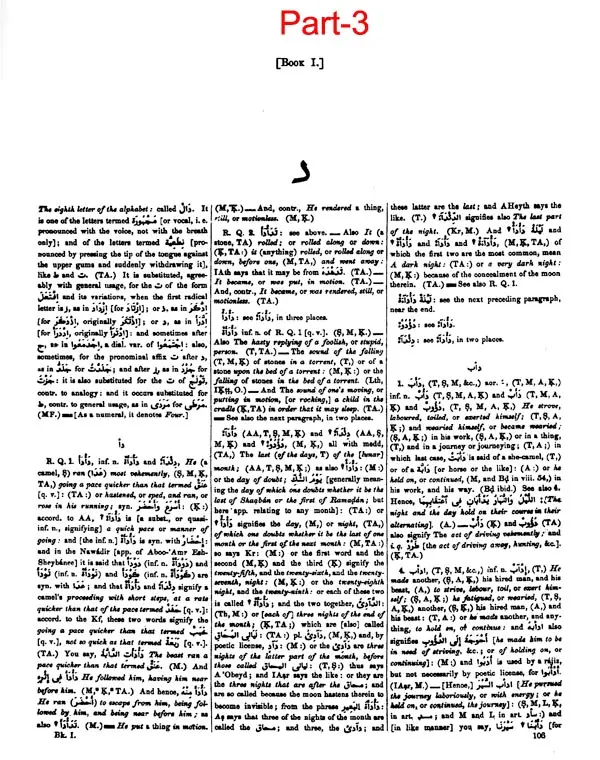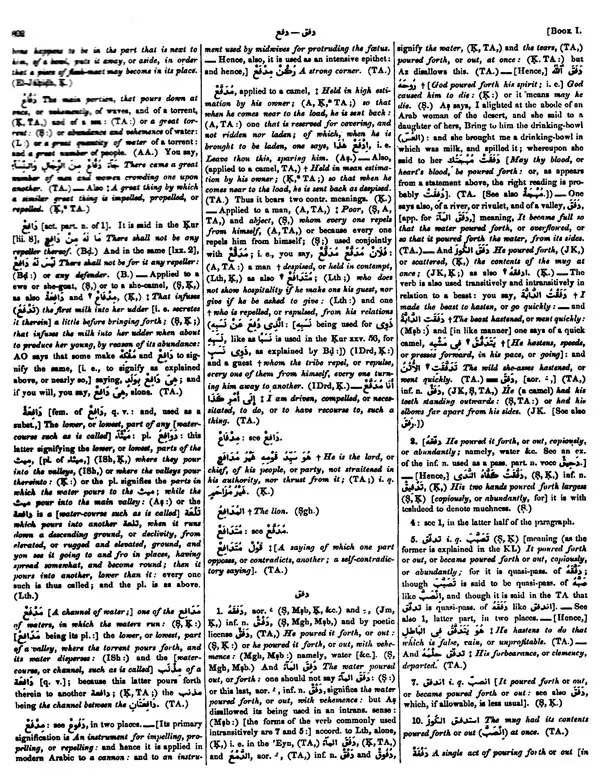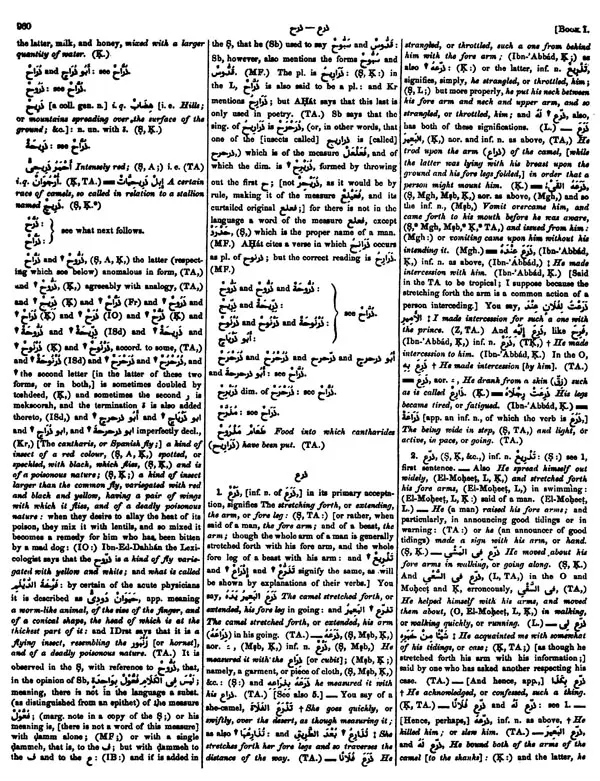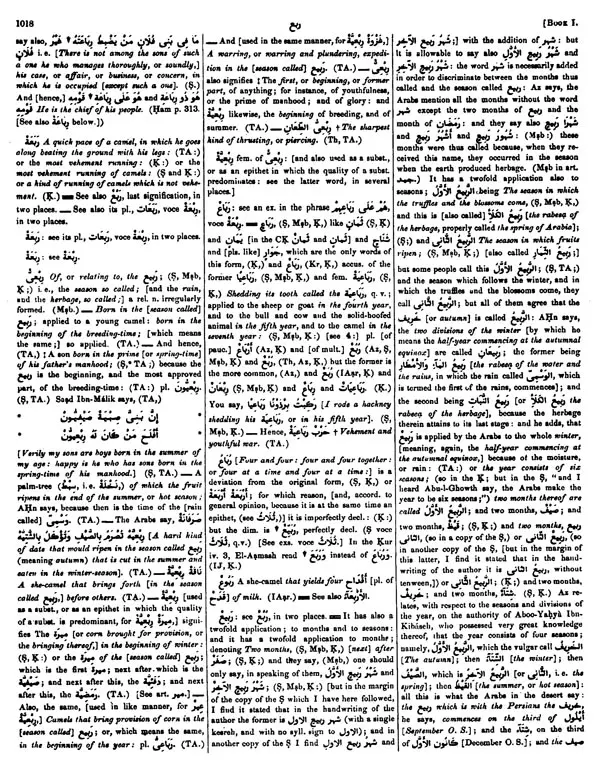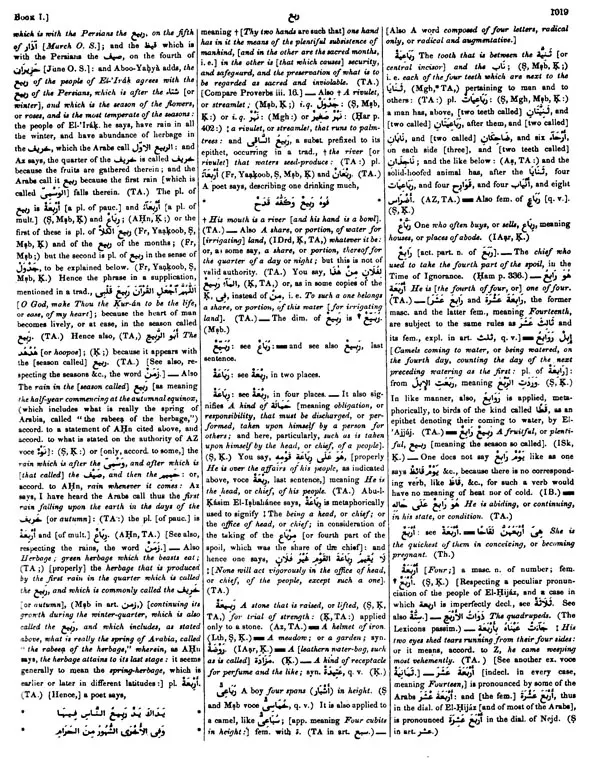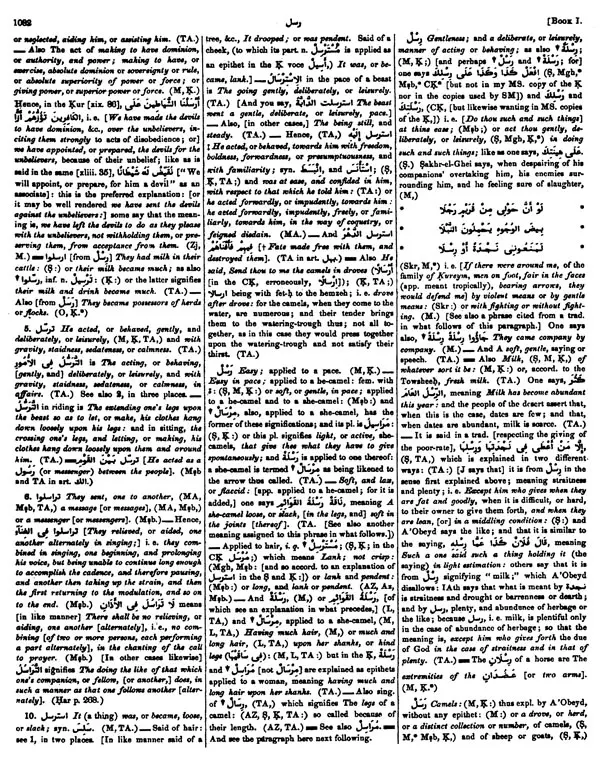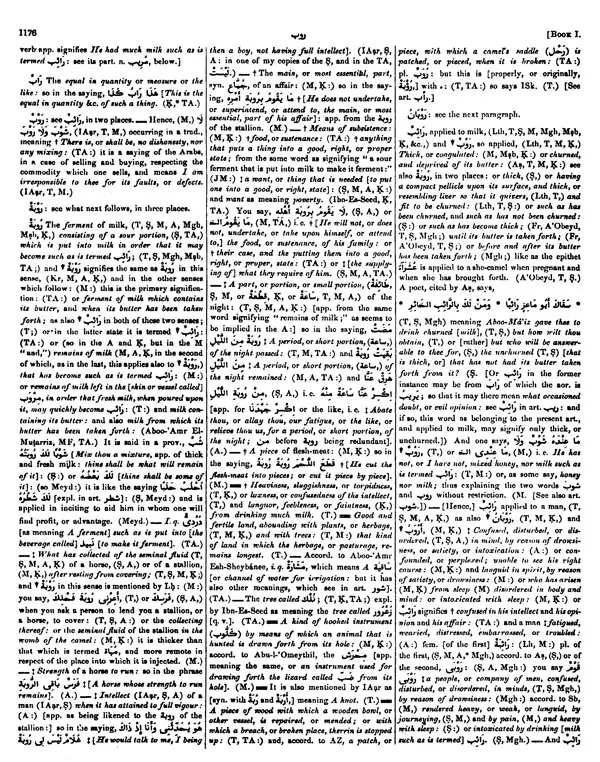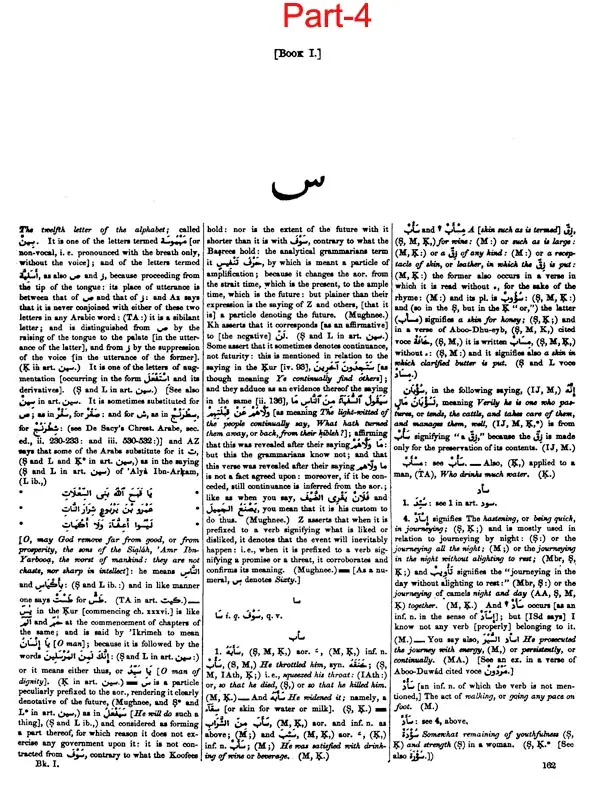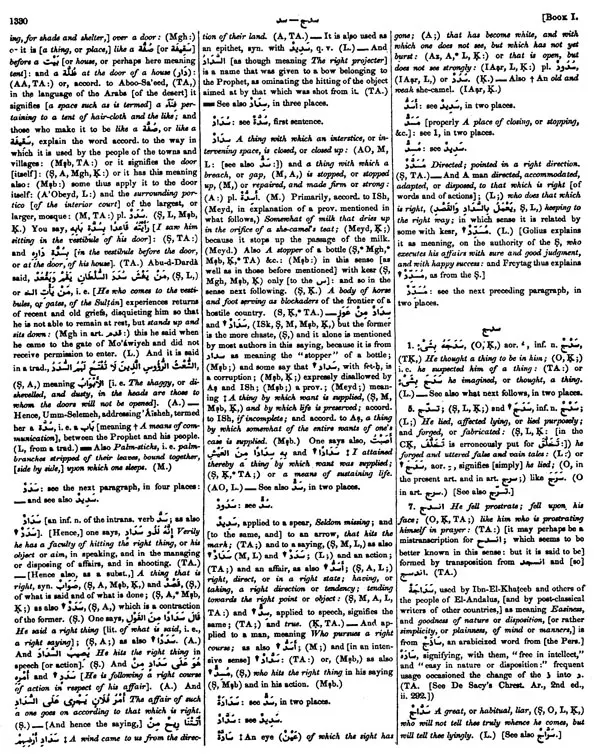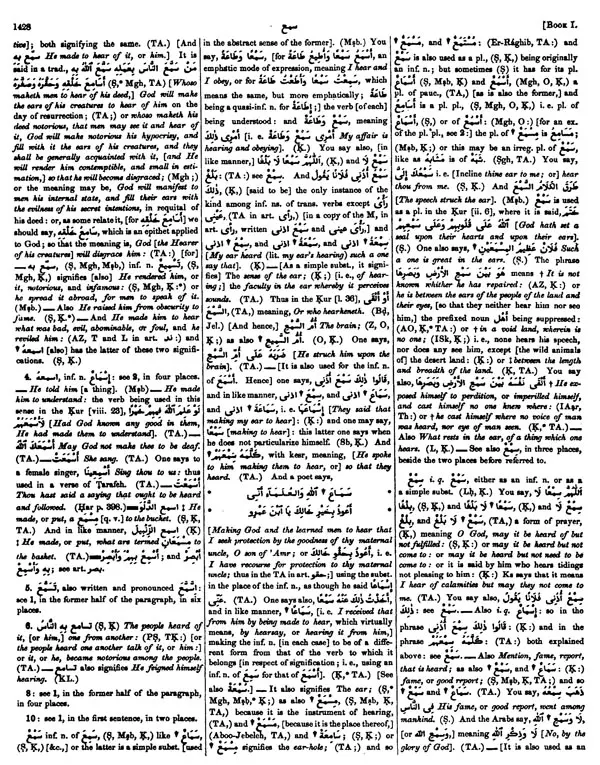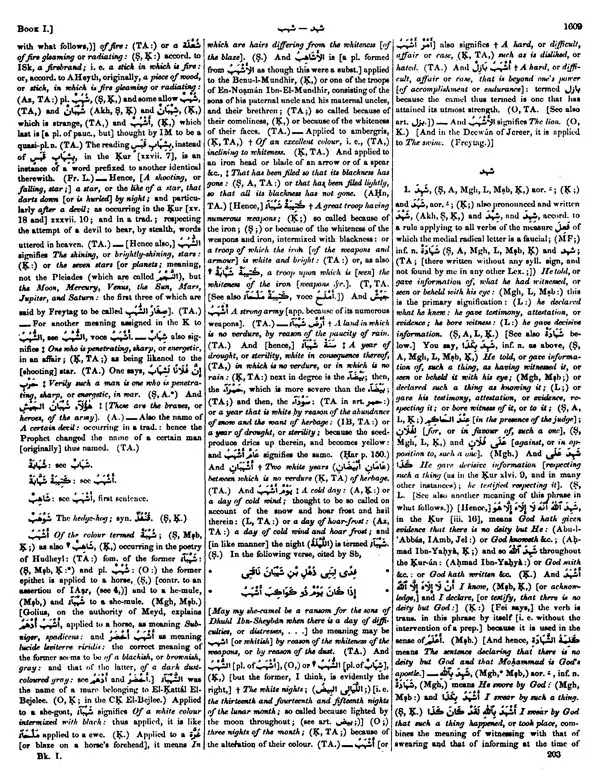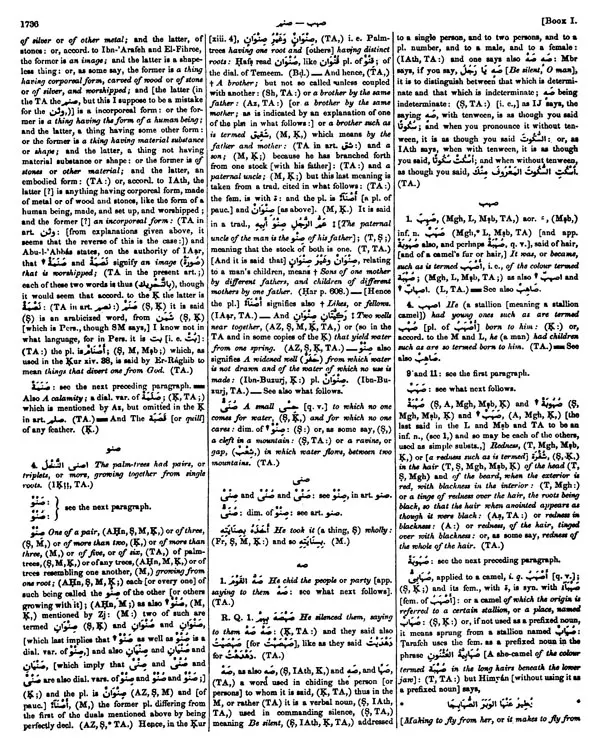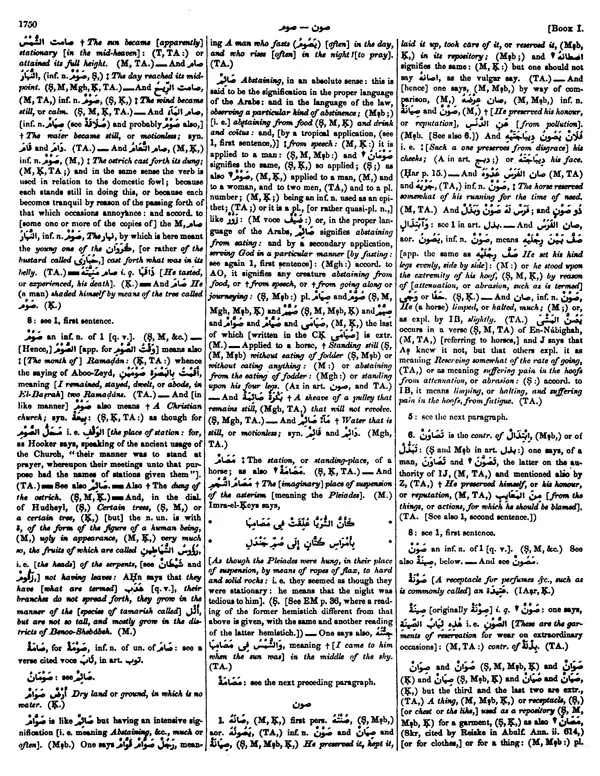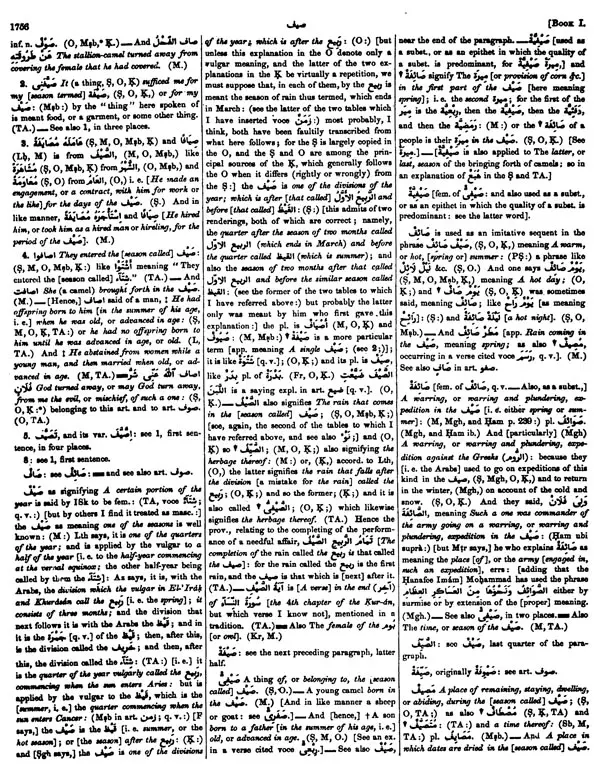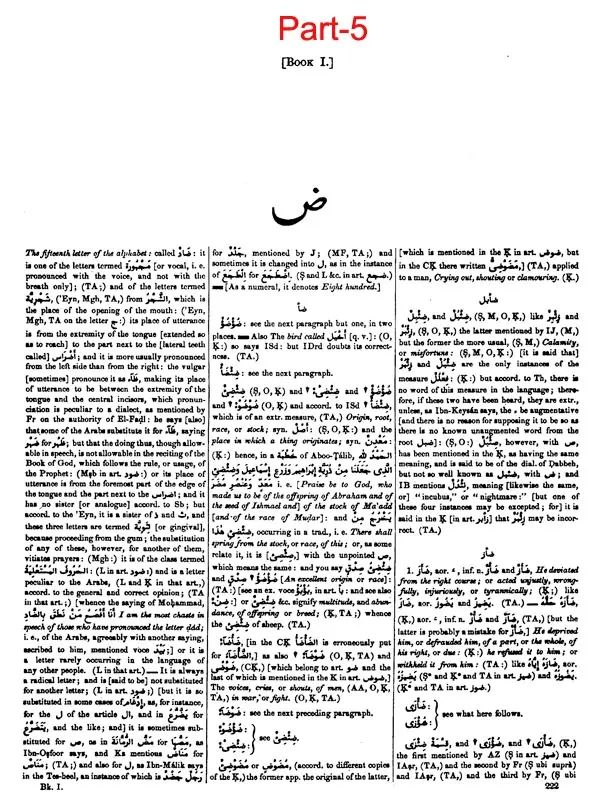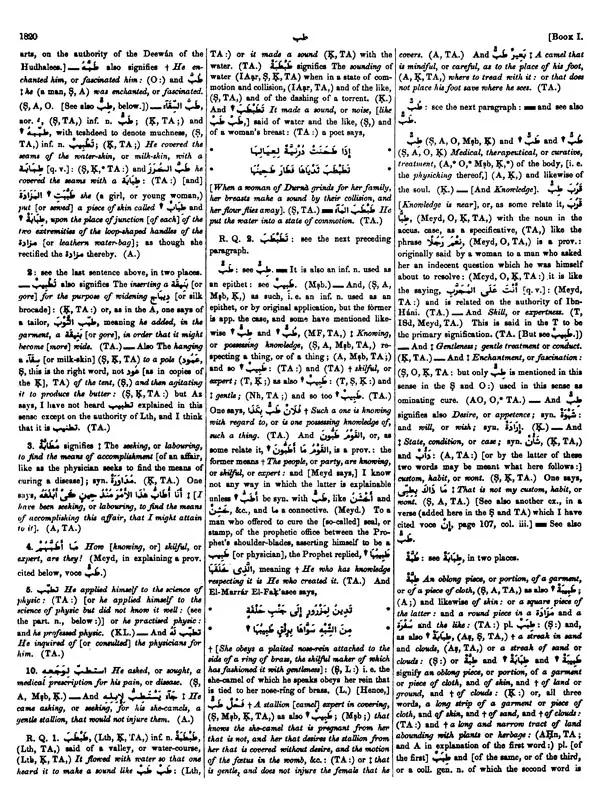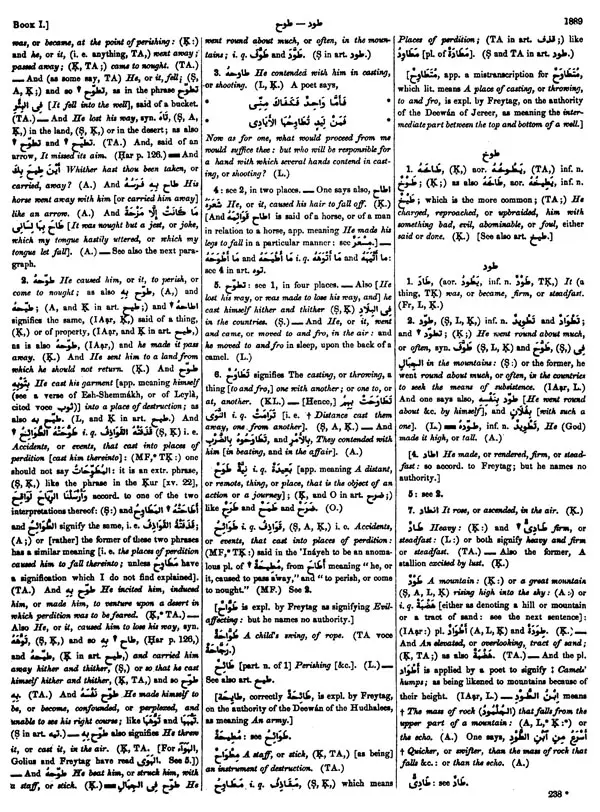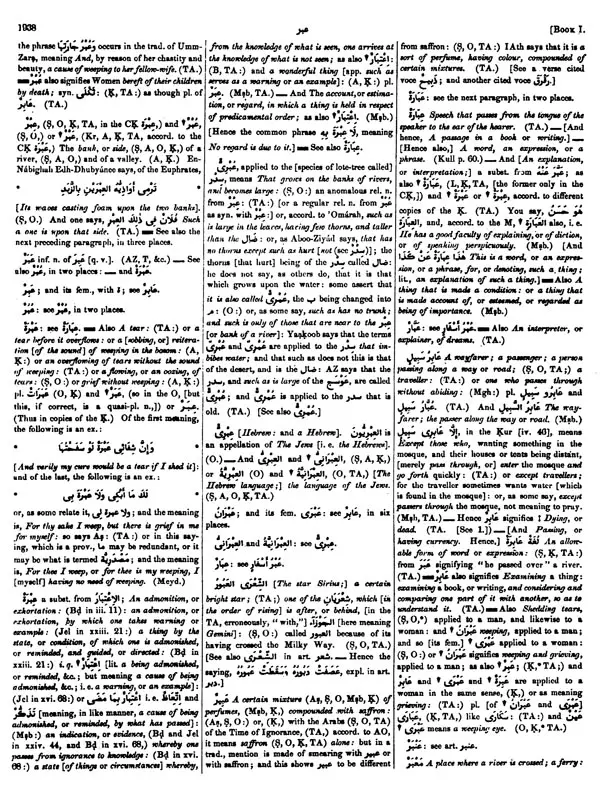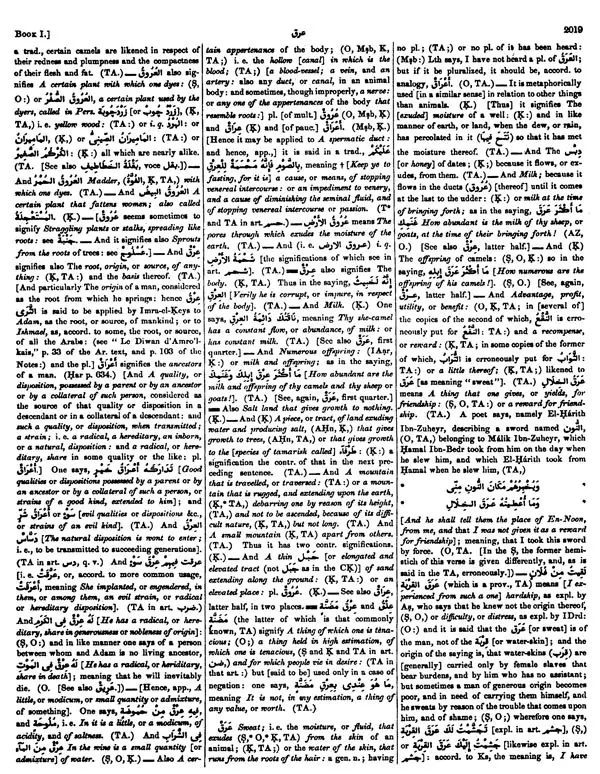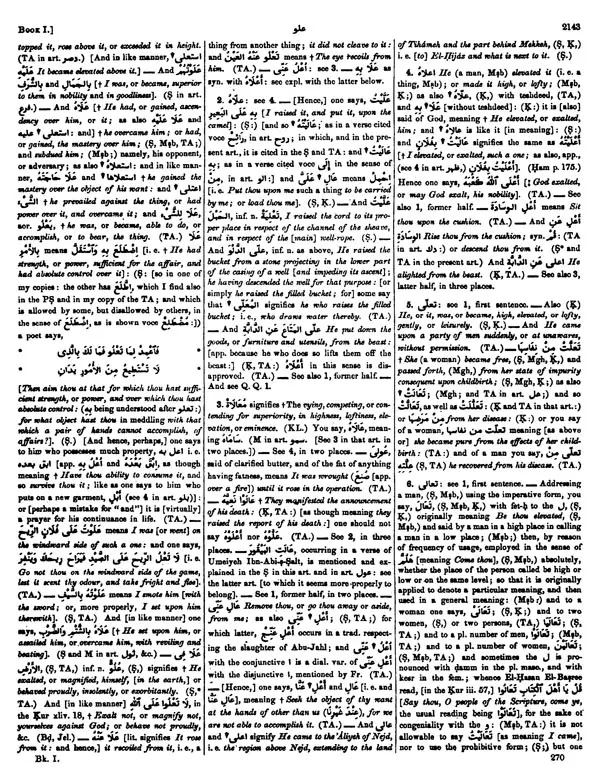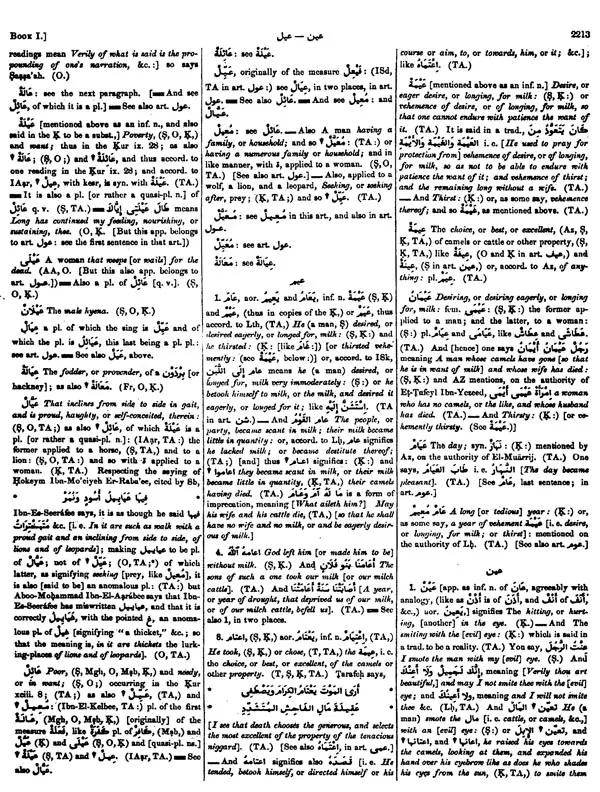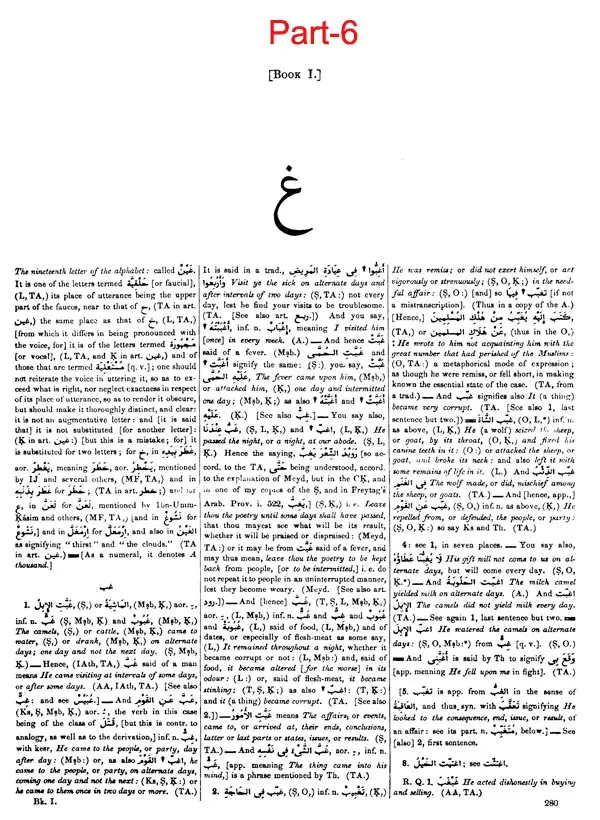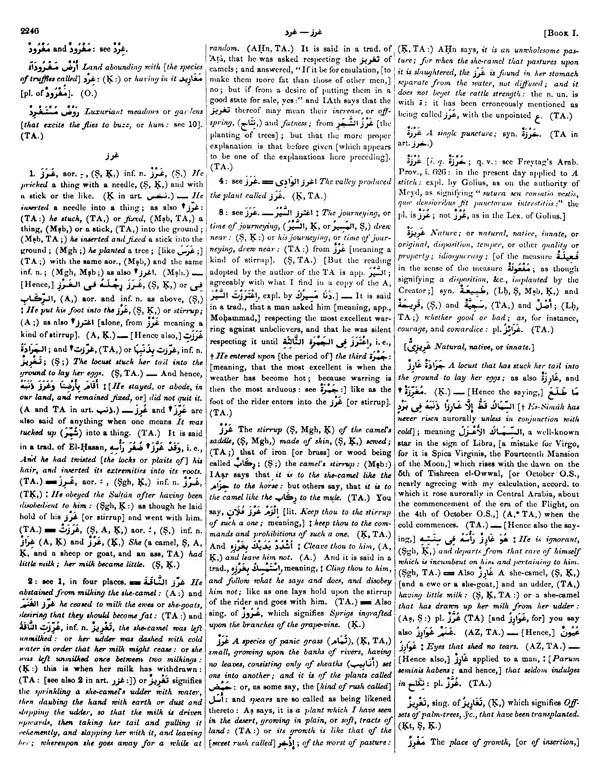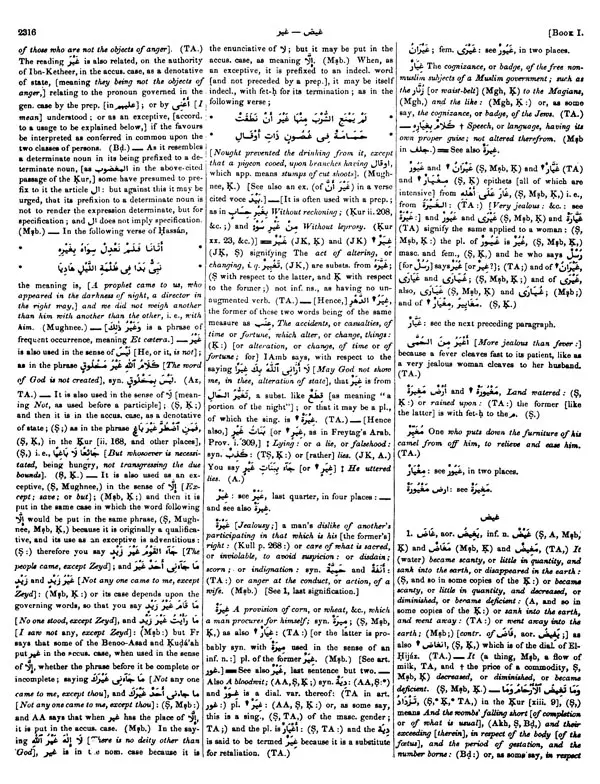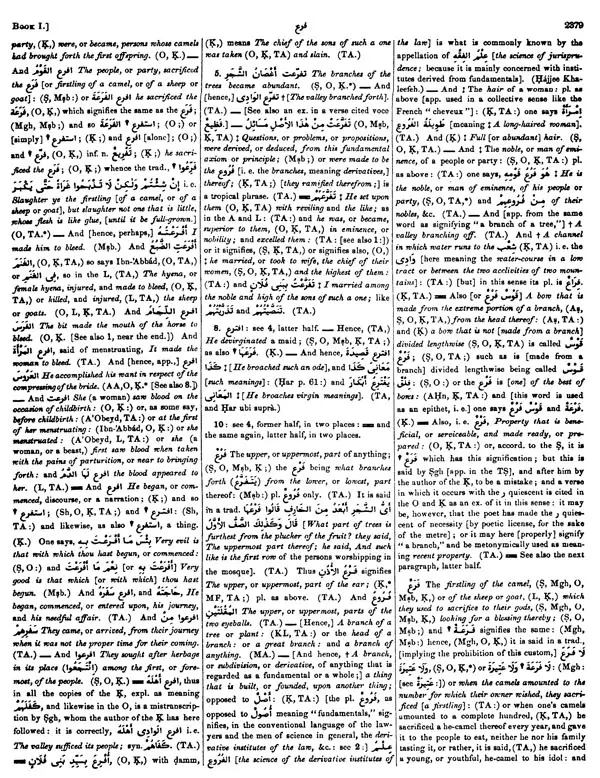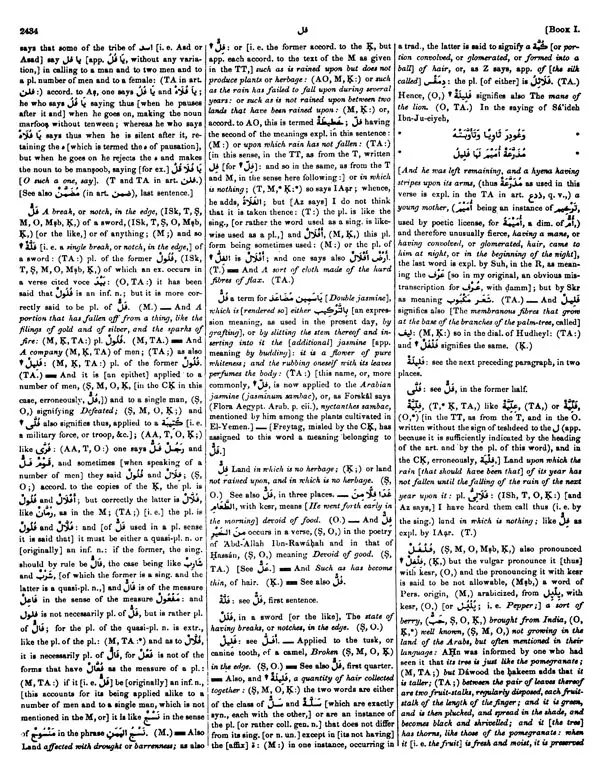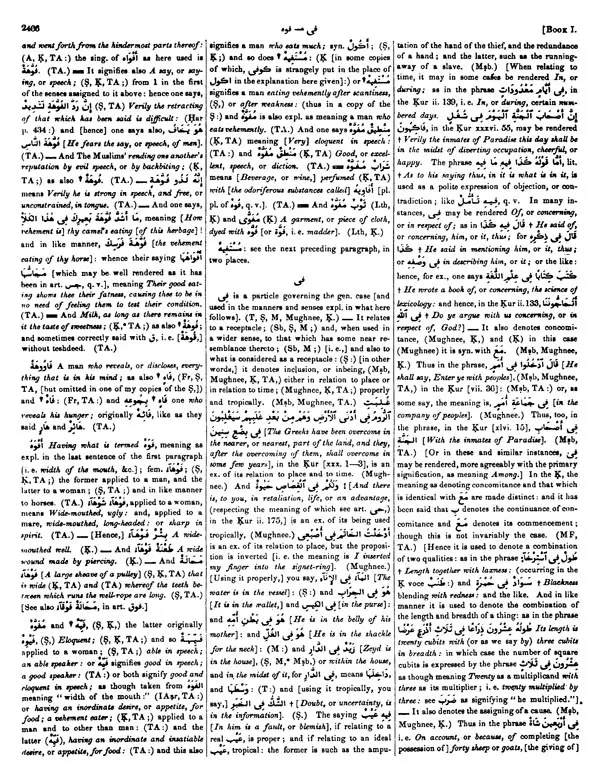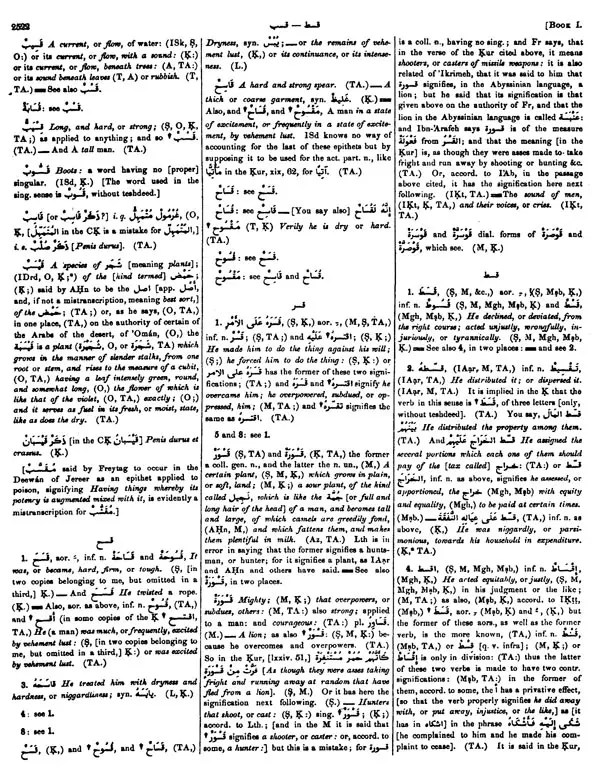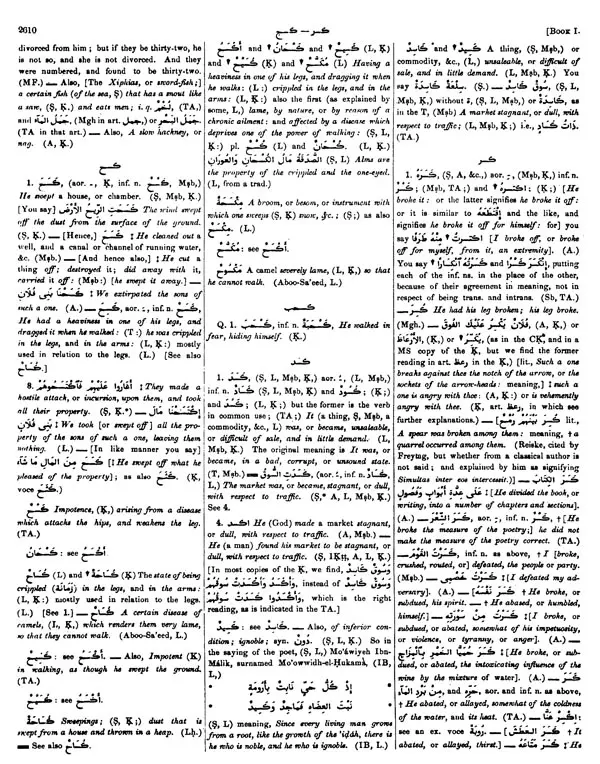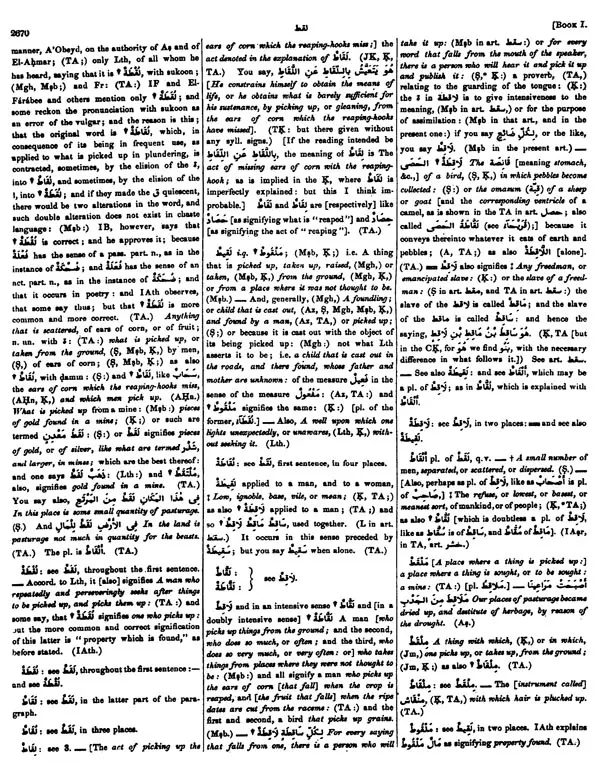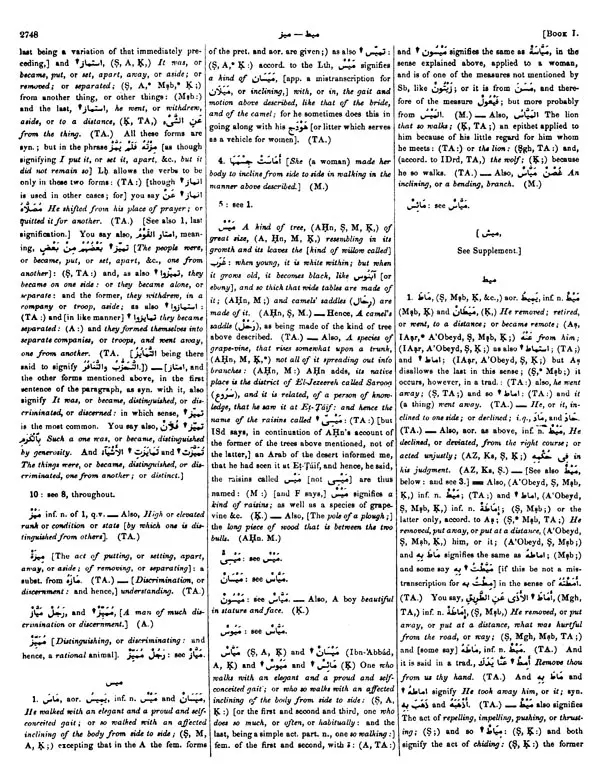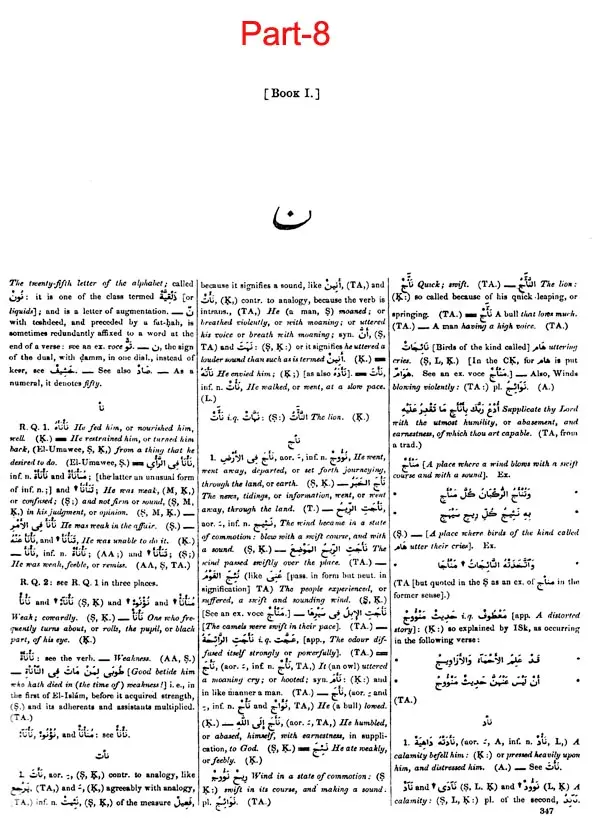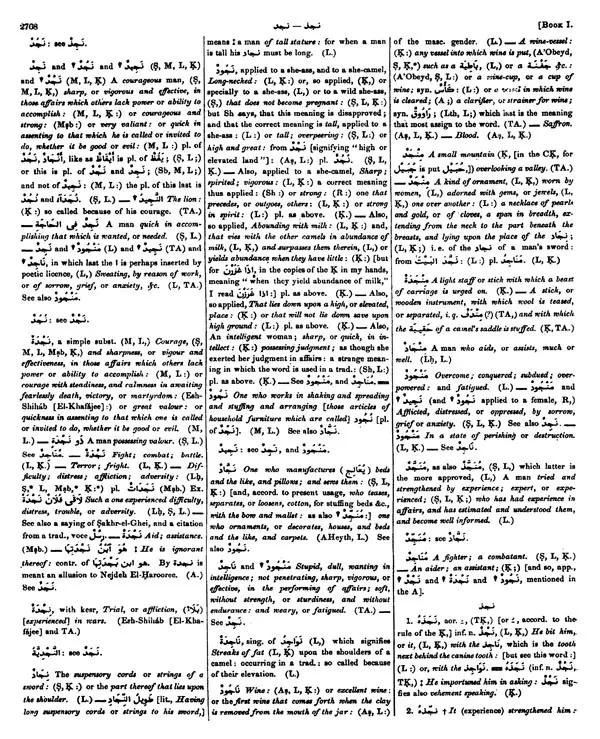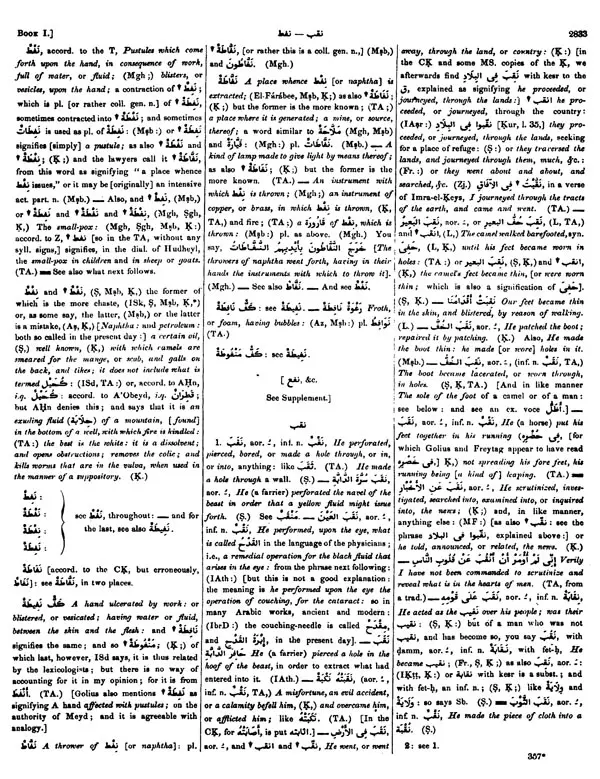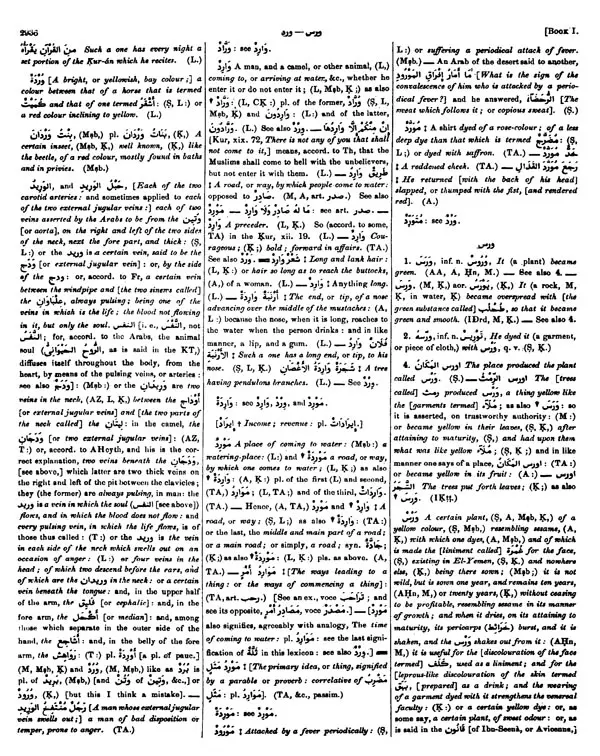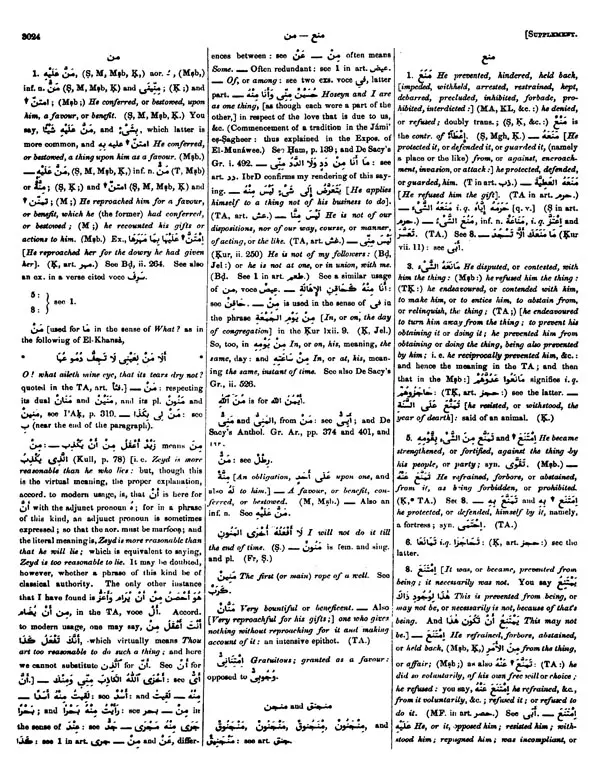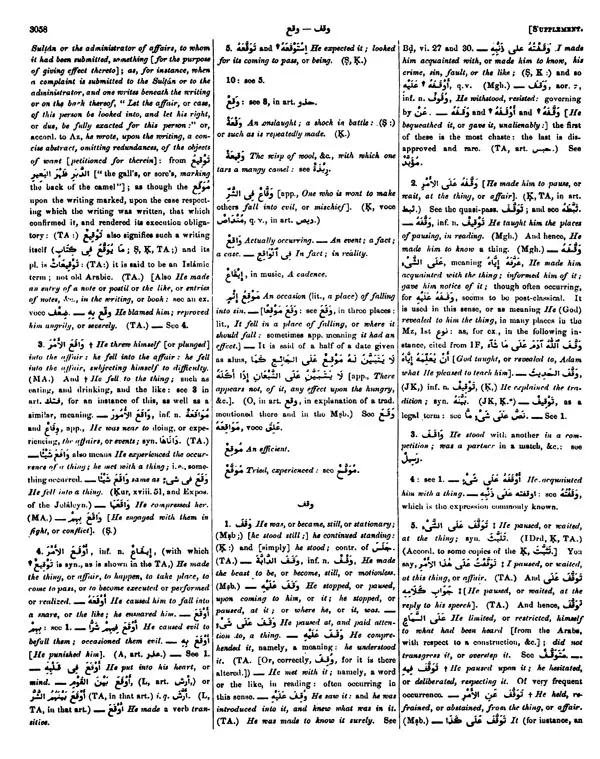
An Arabic-English Lexicon (Set of 8 Volumes)
Book Specification
| Item Code: | UBC650 |
| Author: | Edward William Lane |
| Publisher: | Kalpaz Publications |
| Language: | Arabic and English |
| Edition: | 2017 |
| ISBN: | 9789351288138 |
| Pages: | 3100 |
| Cover: | HARDCOVER |
| Other Details | 11.00 X 9.00 inch |
| Weight | 9.21 kg |
Book Description
This Arabic-English dictionary, compiled by Edward William Lane and published during the second half of the 19th century, consists of Arabic words defined and explained in the English language Based on older Arabic dictionaries, primarily medieval Arabic dictionaries, Lane translates these definitions into English, and he carefully notes which dictionaries are giving which definitions la fol112 lexicographic sources are cited in the work, it is designed to consist of two "Books" or Divisions: one for the common, classical words, another for the rare ones.
Edward William Lane was a British Orientalist, translator and lexicographer. In 1842 Lane, who had already won fame as an Arabist for his Manners and Customs of the Modern Egyption and his version of the One Thousand and One Nights, received a sponsorship from Lord Prudhoe, later Duke of Northumberland, to compile an Arabic-English dictionary.
In the year 1842, most generous offer male to me by the present Duke of Northumberland (the Lord Prullo) enabled me to undertake the composition of this work; and to His Grace's princely aid I have ever since been mainly indebted for the means of accomplishing the project thus originated.
The object proposed was not to do in English little more than what Goliss and others had already done in Latin, by translating and compening from a few Arabic lexicons of the class of epitomes or abstracts or manuals; but to draw chiefly from the most copious Eastern ; one of which, comprising in about one seventh part of its contents the whole of the celebrated Kimes, I knew to exist in Cairo. There, also, I had reason to believe that I might find other sources unknown in Europe, and obtain more all in the prosecution of my design than I could elsewhere; and thither, therefore, I betook myself for this purpose.
On my arrival at Cairo, I first lad recourse, for help in making my preparations, to as accomplished Arabic Scholar, the late M. Fulgence Franel, with whom, during a former resilence in Egypt, I had contracted an intimate friendship. Previously informed by me of my project, he had tested the qualifications of several learned natives for the task of amisting m in collecting, transcribing, and collating, the materials from which my lexicon was to be composed; and he recommended to me, sa the person whom he esteemed the most fit, the sheykh Ibrálem (surnamed 'Ald-dl-Ghafir) Ed-Discokee. To have engaged as my adjustor a sheykh respectol for his character and learning, and to have been disappointed in him, and obliged to dismiss him, might have made him my enemy, and enabled and induced him to baffle my scheme; but my experience led me to believe that a person better qualified for the services that I required of him, then dhe sheykh Thesheem Ed-Dasocken, could not have been found by me in Cairo; and I had no occasion to employ any other assistant, except, occasionally, transcribers, under his supervision.
The assistance that I received from my friend M. Fresnel was not limited to the favour mentioned above. With generosity rarely equalled, he isisted upon transferring to me the most valuable of his Arabic manuscripts, to remain with me during the whole period of the composition of my lexicon, and in case of his death during that period to become my absolute property. Most deeply do I deplore his not having lived to see how greatly those precious manuscripts have contributed to the accuracy and value of my work, and to have them restored to him. They consist of two copies of the Sihah and a copy of the Kumoos. One of the copies of the former lexicon is a manuscript of extraordinary excellence: it was finished in the year of the Flight 676 (A.D. 1277); and forms a large quarto-volume. The other copy of the same lexicon is in three volumes: the second volume surpasses in accuracy every other copy of the same work that I have seen, and is enriched with numerous important extracts, in its margins, from the celebrated Annotations of Ibn-Barree and El-Bustee: the first volume is similarly enriched, and little inferior to the second in accuracy: the third is of the ordinary quality. The copy of the Kamoos, which is written in a very small and compact band, and forms a single octavo-volume, I believe to be unique: it contains, in its margins, (with other annotations and with various readings) copious extracts from the great work which is the main source of my own lexicon; and its text, of which the transcription was finished in the year of the Flight 1120 (A.D. 1708-9), has been carefully collated. These valualile acquisitions I made almost immediately after my arrival at cairo.
Book's Contents and Sample Pages
